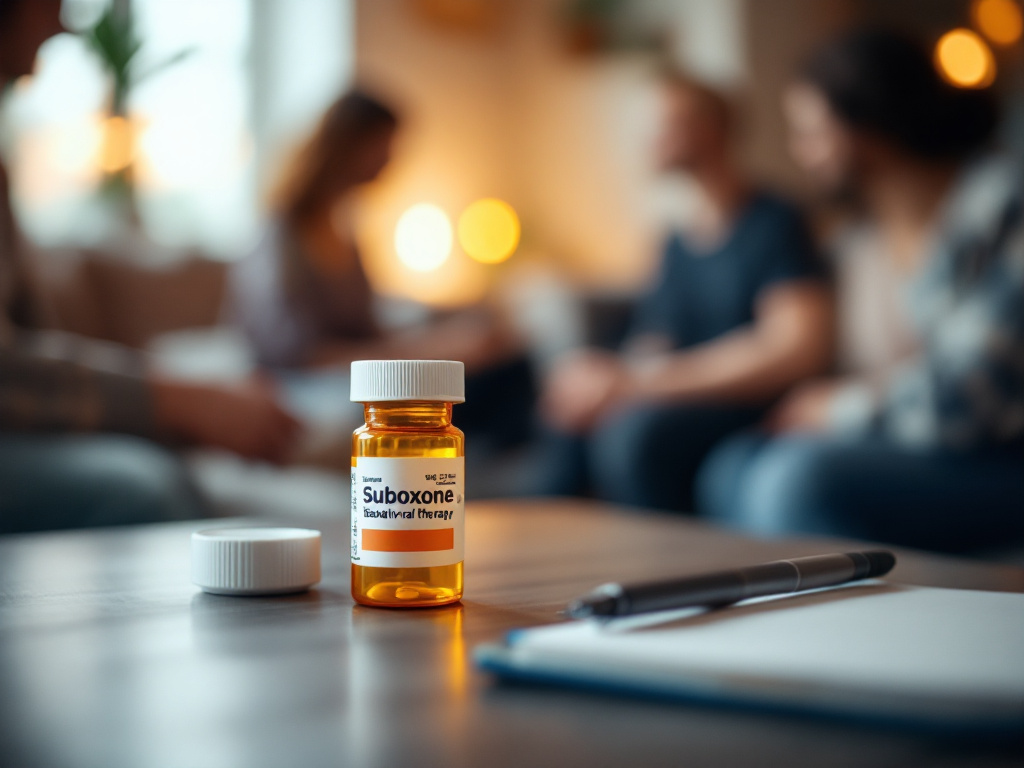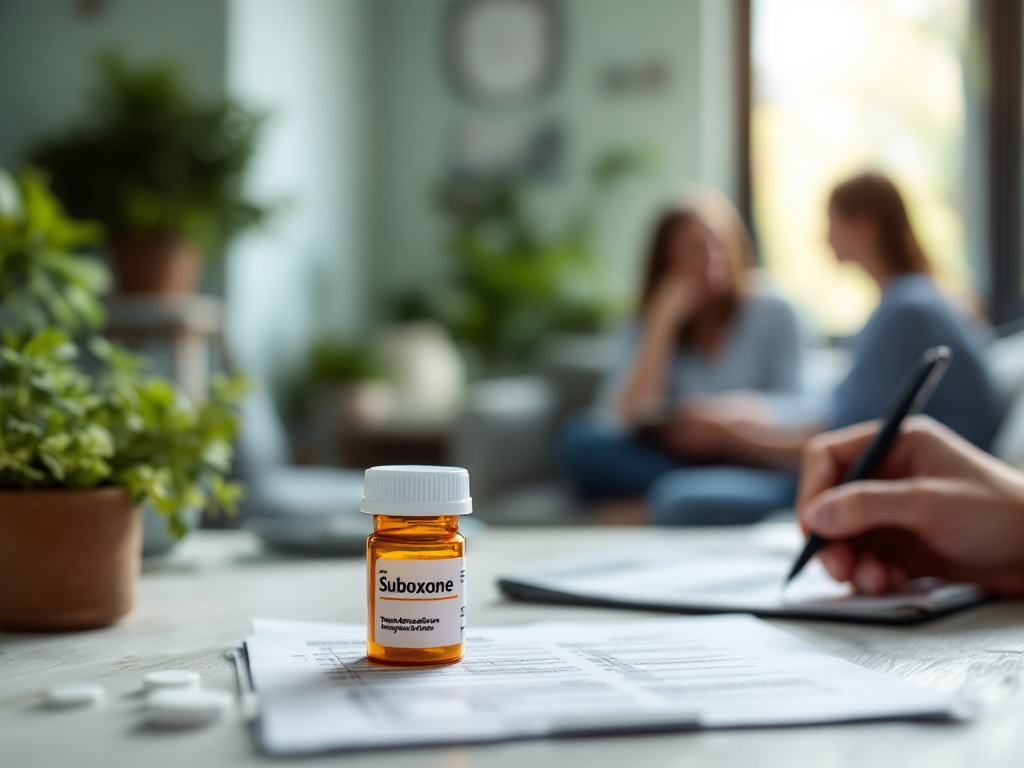Navigating your suboxone taper and maintenance plan can feel overwhelming, especially when you’re trying to balance appointments, dosage changes, and daily responsibilities. Suboxone—a combination of buprenorphine and naloxone—serves as a foundational medication-assisted treatment to ease withdrawal symptoms, reduce cravings, and lower the risk of relapse [1]. With a clear outpatient suboxone prescription program, you can move confidently through induction, tapering, and long-term stabilization while maintaining your daily routines.
At Freedom Healthcare, we offer immediate access to Suboxone treatment and same-day telehealth scheduling, so you can secure a same day buprenorphine appointment or join our virtual suboxone medication clinic without delay. Our outpatient suboxone prescription program delivers comprehensive care, combining evidence-based dosing with individualized plans and the support necessary for lasting recovery.
Understand Suboxone basics
What is Suboxone therapy?
Suboxone is a medication-assisted treatment (MAT) option for opioid use disorder. It combines buprenorphine, a partial opioid agonist that alleviates withdrawal, with naloxone, an antagonist that discourages misuse. By binding to opioid receptors, buprenorphine reduces cravings and withdrawal intensity, while naloxone remains inactive when taken as prescribed but triggers withdrawal if injected.
Benefits of medication-assisted treatment
Medication-assisted recovery offers a balanced approach, blending pharmacology with counseling and support. Key advantages include:
- Faster relief from withdrawal symptoms, allowing you to focus on therapy
- Lowered cravings that reduce the risk of relapse
- Reduced risk of fatal overdose—MOUD cuts overdose deaths by roughly 50 percent [2]
- Flexibility to receive treatment in outpatient settings, maintaining work, school, or family commitments
Role of buprenorphine and naloxone
Buprenorphine’s ceiling effect limits respiratory depression and euphoria, making it safer than full opioid agonists. Naloxone remains inert when Suboxone is taken sublingually but deters injection misuse by precipitating withdrawal if the film is dissolved and injected. Together, they create a protective balance that supports your recovery journey.
Prepare for induction phase
Signs of moderate withdrawal
Begin your first Suboxone dose only when objective signs of moderate opioid withdrawal appear. Common indicators include:
- Restlessness or irritability
- Muscle aches and cramps
- Sweating and chills
- Nausea or abdominal cramps
- Elevated heart rate
Induction dosage guidelines
On Day 1, your prescriber may recommend up to 8 mg/2 mg (buprenorphine/naloxone). After monitoring your response, doses are adjusted rapidly to minimize drop-out during induction. A target maintenance dose of 16 mg/4 mg per day is common, as doses above 24 mg/6 mg do not provide additional benefit [3].
Accessing your prescription
Freedom Healthcare streamlines induction with same-day telehealth visits and flexible scheduling:
- Book a same day buprenorphine appointment
- Verify your insurance coverage for suboxone therapy covered by medicaid or private plans
- Join our virtual suboxone medication clinic or visit an in-person provider
- Receive your first prescription electronically and fill at a local pharmacy
Develop a taper strategy
Comparing taper schedules
Research comparing a rapid 7-day taper to a gradual 28-day taper revealed:
| Taper schedule | Opioid-free urine specimens at end of taper |
|---|---|
| 7-day taper | 44.3% |
| 28-day taper | 29.9% |
Despite expectations, the 7-day group did not experience greater withdrawal or cravings, nor did long-term outcomes differ at 1-month and 3-month follow-ups [4].
Personalizing your taper timeline
Your metabolism, liver function, urinary pH, dosage, frequency of use, and treatment duration all influence how Suboxone remains in your system. A tailored approach may involve:
- Extending or shortening each reduction step
- Adjusting taper intervals from daily to weekly
- Monitoring side effects and cravings closely
Working with your prescriber
Collaborate with your healthcare provider to create a buprenorphine treatment plan setup that fits your lifestyle. Regular check-ins allow dose adjustments and ensure you remain comfortable and supported throughout the taper.
Create a maintenance plan
Stabilization dosing phase
Following induction, focus on achieving a stable dose that suppresses withdrawal and cravings. Rapid titration in increments or decrements of 2 mg/0.5 mg or 4 mg/1 mg helps maintain clinical effectiveness and prevents drop-out [3].
Adjusting your dosage
Once stabilized, minor dose adjustments can address emerging needs:
- Increase if you experience breakthrough symptoms
- Decrease gradually when you’re ready to taper further
- Avoid exceeding 24 mg/6 mg daily, as higher doses show no extra benefit
Defining long-term goals
Establish clear objectives for your suboxone maintenance outpatient program and incorporate an ongoing suboxone recovery management plan. Long-term goals may include:
- Reducing dosage to a minimum effective level
- Integrating behavioral therapy and peer support
- Planning for eventual taper off Suboxone, if appropriate
Track your treatment progress
Monitoring withdrawal symptoms
Keep a daily journal of mood, physical symptoms, and triggers. Tracking patterns helps you and your provider pinpoint when dose adjustments are needed.
Using urine drug screening
Periodic urine tests verify adherence and detect any unauthorized substances. This objective data supports honest conversation about your progress and safety.
Recognizing relapse warnings
Early intervention is key. Watch for:
- Sudden spikes in cravings
- Increased stress or life changes
- Skipped doses or clinic appointments
Respond quickly by discussing these signs with your care team.
Overcome common challenges
Managing cravings
Employ coping techniques such as:
- Deep breathing and mindfulness exercises
- Physical activity to redirect focus
- Connecting with a sponsor or support group
Addressing stigma
Medication-assisted treatment is an evidence-based approach. Remember that Suboxone is a tool, not a crutch. Educate family and friends to foster understanding.
Navigating insurance hurdles
Coverage for Suboxone varies by plan and state. Only 10–20 percent of opioid use disorder patients receive buprenorphine/naloxone due to provider limits and authorization requirements [5]. Verify your benefits with an insurance verified suboxone treatment provider to avoid unexpected costs.
Utilize supportive resources
Behavioral therapy integration
Combining medication with counseling improves outcomes. Explore our suboxone and behavioral therapy program to address underlying issues fueling addiction.
Peer support networks
Meeting others in recovery can boost motivation. Look for local Narcotics Anonymous chapters or online forums tailored to MAT participants.
Telehealth and virtual care
For convenience and privacy, consider ongoing support through our suboxone medication support therapy. Virtual check-ins and remote counseling keep you on track when in-person visits aren’t possible.
Select your treatment provider
Evaluating clinic options
When choosing an outpatient MAT clinic, compare:
- Provider experience with Suboxone and buprenorphine therapy
- Insurance acceptance and prior authorization support
- Availability of telehealth and in-person visits
Advantages of Freedom Healthcare
Freedom Healthcare stands out by offering immediate Suboxone access, same-day telehealth scheduling, and personalized care plans. Our experienced team guides you from induction through maintenance, all within a supportive environment.
Starting your treatment journey
- Verify coverage with an outpatient mat clinic accepting insurance
- Schedule your first consultation—often available the same day
- Complete intake paperwork and discuss your goals
- Begin your individualized Suboxone taper and maintenance plan
By following these steps and leveraging evidence-based practices, you can navigate every phase of your outpatient Suboxone treatment with confidence. Freedom Healthcare is here to support you—reach out today to start your journey toward lasting recovery.











